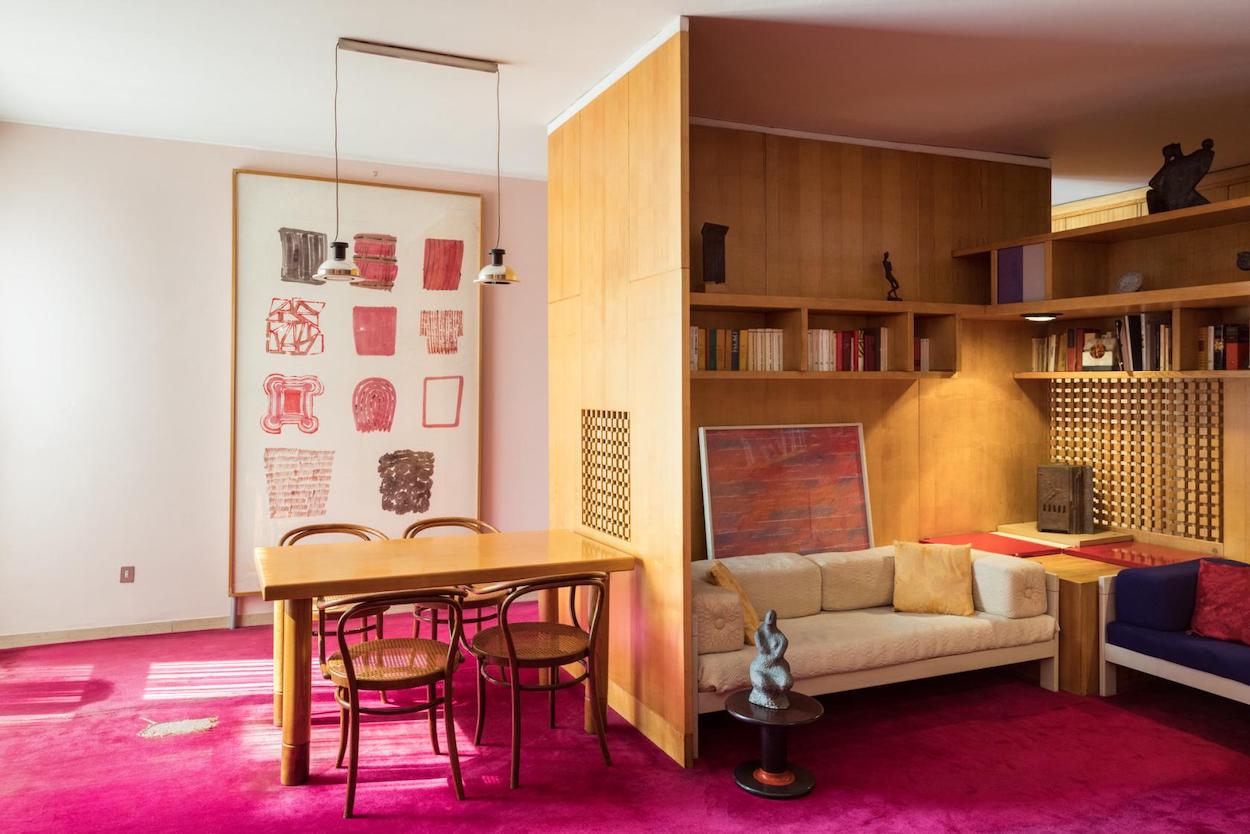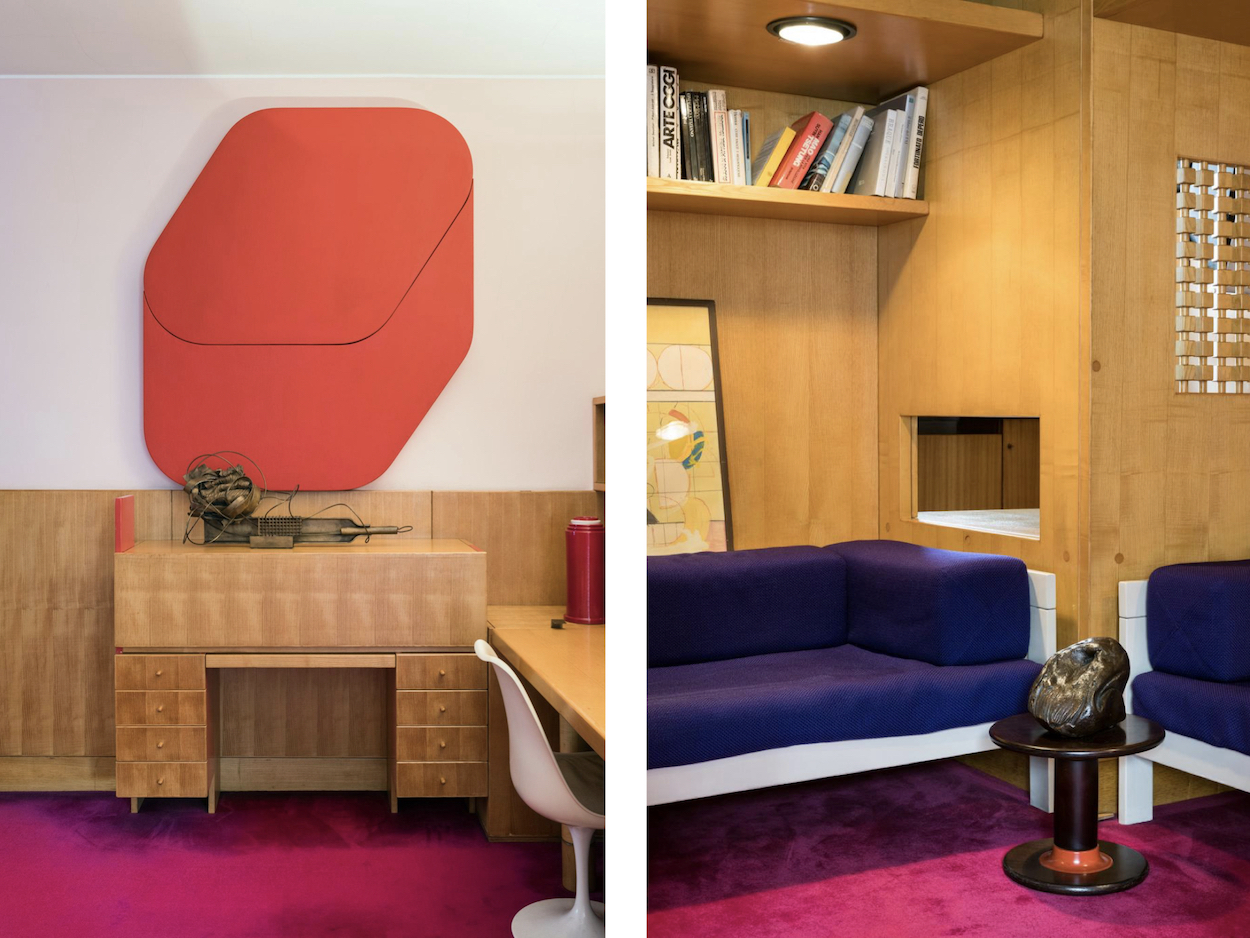“You don’t save your soul just painting everything white.” Who else could have said this other than the late Italian architect Ettore Sottsass? He uttered this quip in response to the rise of minimalism, an aesthetic that’s either eternal or well past its prime, depending on who you ask. Sottsass believed minimalism wasn’t the future; his aesthetic celebrated color, movement, and boldness, so much that he co-founded Memphis Milano in 1980 to rebuke minimalist architecture’s self-important austerity.
Casa Lana, an historic example of Sottsass’s striking work, is now on view at the Triennale di Milano. Originally built in 1965, the apartment was designed for Sottsass’s friend and patron, the lithographer and painter Giovanni Lana. More than five decades later, the Lana family heirs and Ettore Sottsass Archive graciously donated, dismantled, and faithfully reconstructed the apartment as part of the museum’s permanent collection. “We couldn’t miss this opportunity due to the extraordinary integrity of the apartment,” says curator Marco Sammicheli. “It’s as if Casa Lana was frozen in time, precisely as the architect designed it. This allows us to present a project in its totality, integrity, and strength.”
Besides being an immaculate preservation, Casa Lana embodies Sottsass’s novel design approach. Like many apartment dwellers, Lana desired a feeling of spaciousness in his home. In response, Sottsass deployed a zoned, corridor-less design scheme, concentrating the living, dining, and study areas around a bespoke wooden hub. Cabinetry, casework, and even some furnishings were integrated into the hub to save space. Sottsass also carefully considered the placement of art objects to delineate each space’s distinct purpose, and to liven the place up—as if the magenta carpeting didn’t do that enough.


